Multisensory Teaching for Reading and Spelling
Using a multisensory approach can transform your reading and spelling lessons–for both you and your child. Read on to discover exactly what the multisensory approach is and how you can use it. And don’t miss the free printable activities at the end of this post!
Three Main Pathways to the Brain
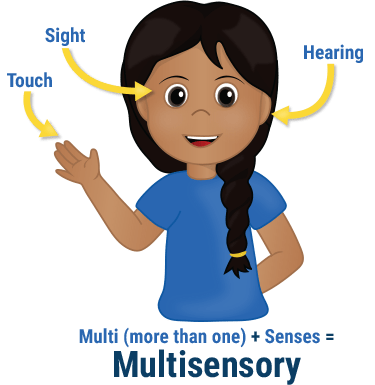
Learning begins with your senses. We can think of our senses as pathways to the brain. When teaching reading and spelling, the three main senses we can involve are sight, hearing, and touch.
- Sight (the visual pathway)
- Hearing (the auditory pathway)
- Touch (the kinesthetic pathway)
It’s not as practical to involve the other two main senses (taste and smell), so for the purposes of teaching reading and spelling, we’ll just focus on these three.
But how do you do that? Aren’t reading and spelling visual skills? You look at the word and read it, right?
It is true that with most curriculum, spelling and reading are taught primarily through the visual pathway, ignoring the other major pathways to the brain. But not only is it possible to activate the auditory and kinesthetic pathways to the brain, doing so is extremely beneficial for most learners. Here’s how that works.
Multisensory Learning Is Powerful!
Think of your eyes, ears, and hands as information receptors for your brain.
Your senses gather information and send it to your brain for processing. Then your brain decides whether to pay attention to the information. If it does, the information is stored in your short-term memory for further processing. The more information receptors you involve, the better the chance that the information will be retained by the brain.
Interestingly, when children are taught using all three pathways to the brain—visual, auditory, and kinesthetic—they learn more than when they are taught through only one pathway.1 The more senses we involve, the more learning occurs. So even if your child tends to prefer visual learning, it is still important to teach through all three pathways.
By the way, when you use multisensory teaching, it isn’t necessary to figure out whether your child has a particular learning preference. That’s because the best way to teach is to involve multiple pathways to the brain rather than target just one pathway.
Engage All Three Pathways Simultaneously
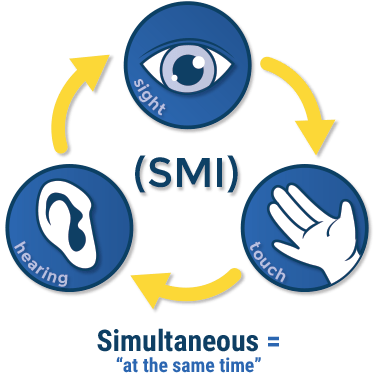
Multisensory teaching is a big improvement over teaching through a single pathway to the brain, but the real power comes when you combine all three pathways at the same time. Here at All About Learning Press, we call this Simultaneous Multisensory Instruction—the SMI method.
SMI is a special subset of multisensory teaching. Instead of involving one pathway at a time, SMI activates two or three pathways to the brain simultaneously.
SMI is powerful because, as neuroscientists say, “brain neurons that fire together, wire together.”2 When we teach using multiple senses simultaneously, the neurons in the respective parts of the brain fire at the same time and wire together to create neural networks. These neural networks allow the brain to store and retrieve information much more effectively and efficiently. Isn’t that exciting?
And when we say that All About Reading and All About Spelling are multisensory programs, it is specifically this highly effective approach that we are referring to.
How the Multisensory Approach Is Used in Our Programs
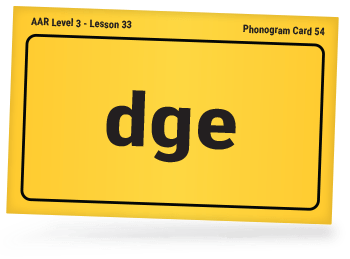
Here’s an example of how the SMI method is used in All About Spelling.
When a new phonogram is introduced (for example, phonogram DGE), the teacher dictates the sound “/j/, three-letter /j/.” Then the student writes the letter or letter combination as he repeats the sound.
This simple activity simultaneously engages the visual, auditory, and kinesthetic pathways to the brain:
- Visual: the child sees the phonogram written down
- Auditory: the child hears the phonogram sound and repeats it as she writes the letters that make up that phonogram
- Kinesthetic: the child retains the muscle memory of writing the letter (hand) and saying the sound (jaw, tongue, and voice box)
The visual, auditory, and kinesthetic pathways are all engaged, and the information becomes neurologically linked together. This will allow information to be retrieved more easily than if only one pathway had been engaged.
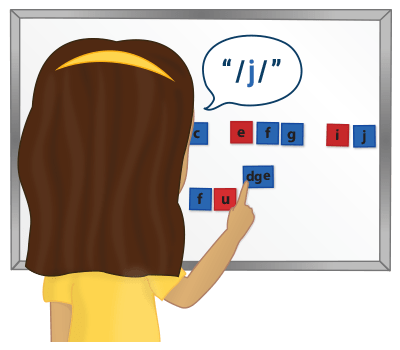
Here’s an example of how the SMI method is used in All About Reading.
When blending, the child touches one letter tile at a time, saying the sound as she touches the tile.
This simple activity simultaneously engages all three pathways: visual (seeing the phonogram), auditory (saying the sound), and kinesthetic (touching one tile for each sound). The activity also reinforces the skills of directionality, phonics, and blending, and leads to long-term retention.
Every single lesson in both programs contains multisensory activities.
Ready to Try Multisensory Activities with Your Kids?
Here’s a roundup of five blog posts that feature some of our favorite multisensory activities for reading and spelling. Enjoy!
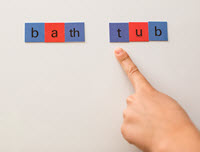
Compound Words are most effectively practiced with visual and kinesthetic activities.
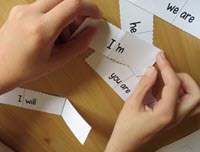
Contractions are a lot more interesting with an activity that engages multiple senses.
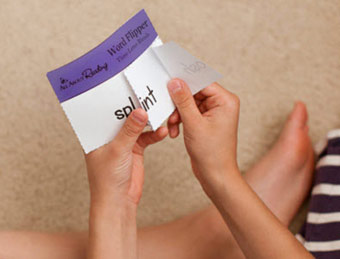
Word Flippers engage all three pathways while working on decoding skills and automaticity.
Additional Help for Your Child’s Memory
To learn more techniques that help strengthen your child’s memory and achieve learning that really sticks, download my free e-book, Help Your Child’s Memory.
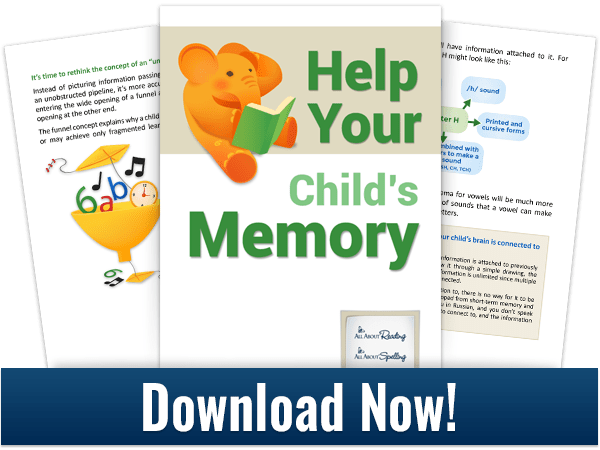
You will discover…
- Why information goes right over your child’s head … and what to do about it
- How the “Funnel Concept” can improve your teaching and result in long-term learning
- Schemas—what they are and how they help improve memory
- What “Simultaneous Multisensory Instruction” is and why it is such a powerful teaching method
- Six things you can do today to improve your child’s working memory
Do you use multisensory teaching with your children?
___________________________________
1. Farkus, R.D. (2003). Effects of traditional versus learning-styles instructional methods on middle school students. The Journal of Educational Research, 97(1), 42-51.
2. Sousa, D.A. (2017). How the brain learns. Thousand Oaks, CA: Corwin, a Sage Publishing Company.




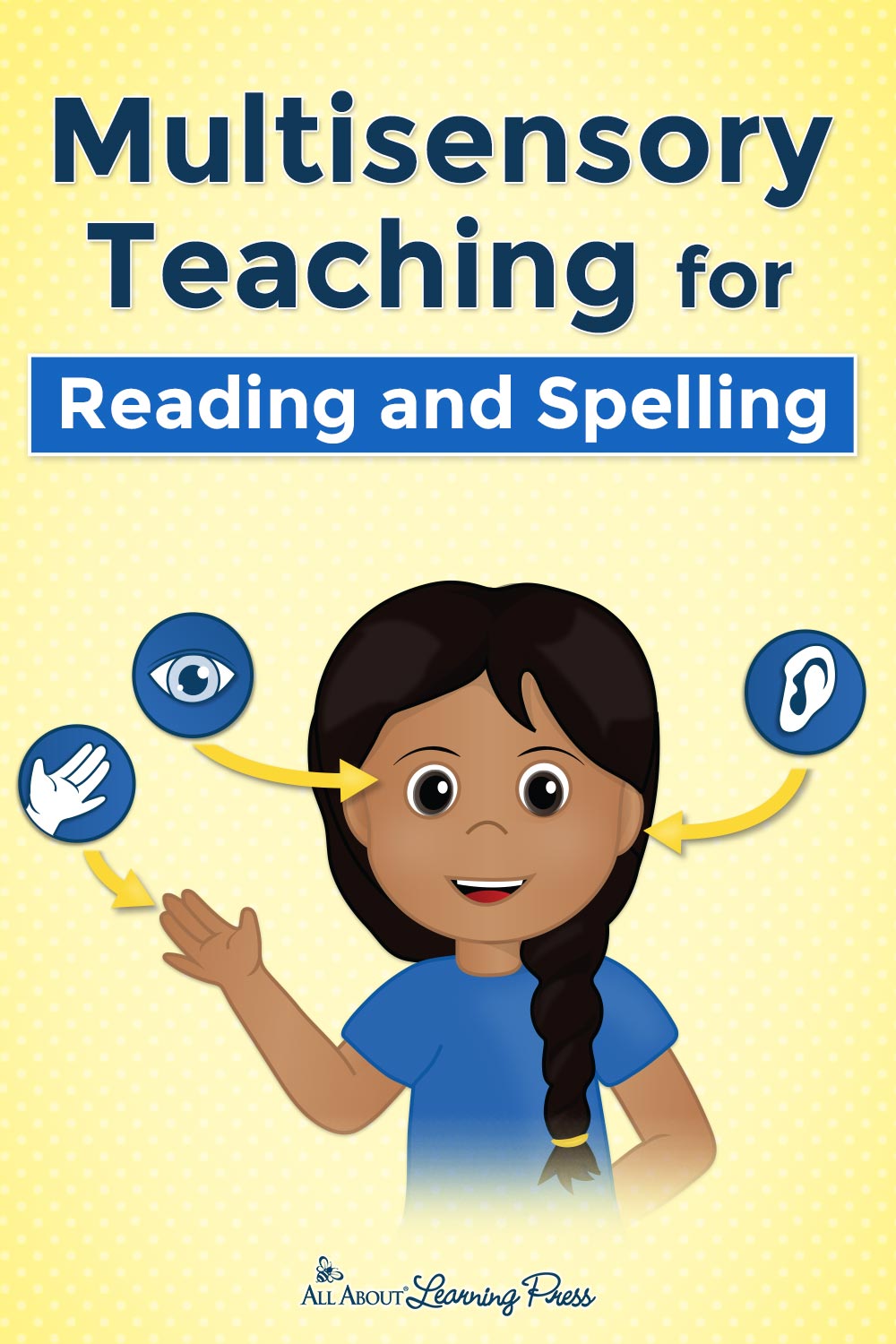






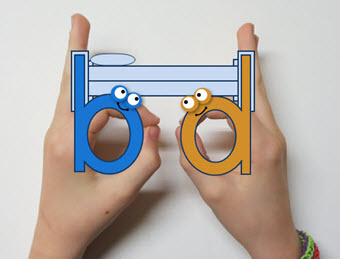

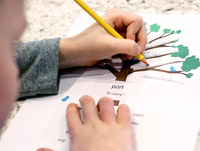

S
says:Love reading about multi-sensory learning. As a homeschool parent it makes the whole process more enjoyable.
Robin
says: Customer ServiceOh, yes! Multisensory teaching is so important for learning success, but it’s important for learning enjoyment too!
Toni
says:Fantastic to see this finally being taught ! I have been teaching reading like this for years. My son was reading at the age of 3. By the end of kindergarten he was devouring books and tested out at a 7th grade reading level. This has been the only way my dyslexic students have learned to read. You are wonderful to bring it to a place where others will see and repeat the concepts
Robin
says: Customer ServiceThank you, Toni!
Sheryl Harris
says:This is just what I’ve been looking for. Thank you.
Robin
says: Customer ServiceYou’re welcome, Sheryl! Let me know if you have questions or need anything.
Linda
says:Can’t wait to see how it works
Robin
says: Customer ServiceLinda,
If you have questions or need more information, let us know. We’re happy to help!
Rachelle Hippen
says:My son LOVES to use varying hands on methods to learn- makes it so much more fun, and helps to imprint the information into his mind.
Char
says:Can’t wait to use this
Susan
says:Multi-sensory strategies are so useful and beneficial for visual memory. Thank you for all that you do.
Sue
says:Sorry for the unintentional duplicate reply. While entering my previous reply I received error messages. Didn’t know how to correct so enter my name differently. Checked back and now both are here.
Robin
says: Customer ServiceWe are sorry about that, Susan. The blog experienced a lot of difficulties yesterday, mostly due to the large amount of people commenting.
e sabousa
says:I just love the color coded tiles. They really make life easier for the kids. Your word families are terrific! It is great that the cards are shuffled so that the kids are not just memorizing patterns. They must continue to read and spell as they go on. Cards are shuffled in different orders and patterns.
Every lesson ends with fluency practice or sentence dictation. Perfect!
Robin
says: Customer ServiceThank you!
Diana Johnson
says:Great program, enjoyable for all involved!
Dayna
says:My kids do so much better when learning is multi sensory.
Lauren I
says:We love All About Reading! The readers are some of the best early readers out there! It has been encouraging for my son to have interesting stories to read as he is learning!
Emily
says:This is such a fun way to learn reading concepts.My kids enjoy the multisensory activities!!
Ashlee
says:This program is so good! While teaching my boys this program I have taught myself how to spell better! Amazing!
Dawn
says:Thank you for the free e-book!
Amy
says:My kids do well with multi sensory learning
Sarah
says:We have not used all about spelling but we love the all about reading and how they incorporate that triangle of visual, touch and auditory. It really does help my daughter who is very hyper and can’t focus for long.
Jeanette
says:I haven’t used the All About Spelling Program yet, but I absolutely love the All About Reading books. They provide such good stepping stones to take you from knowing your letter sounds to reading fluently
April Briley
says:I’m so grateful for all of the tips you provide here.
Chelsea Chan
says:I’m really enjoying these resources for helping to teach my son to read. Thank you for this
Lisa
says:My daughter is 6 y.o. and is a struggling reader. She loves the multisensory approach. She really likes this learning style better, and she has really improved her reading. They also use OG in her reading class at school.
Alex G
says:Love this program!
Kristy
says:For my struggling 11 year old reader and speller, switching to AAR and AAS this year has been so worth it! We’ve seen him grow so much in his reading skills and confidence. He doesn’t dread reading or spelling now, especially because of the tiles. Thank you for creating a program that engages the different styles of learning!
Robin
says: Customer ServiceI’m so pleased to hear that your 11-year-old is growing in confidence in reading, Kristy! That’s wonderful!
Christina
says:If you’re new to homeschooling and wondering what curriculum to use…THIS IS IT!!!!!!!
Amanda Wright
says:This program helped my oldest son learn to read and spell. We are excited to start it all over again with my second child.
Ab
says:Very helpful–thank you
Anna B
says:This method has helped my dyslexic kid so much!
Rachelle
says:We love all about reading and are really excited to try all about spelling. This style of learning works so well for my son.
Jessica Barnes
says:Love it!
Julie
says:Reason I love the All About programs is because of its multi sensory approach!
Laurie
says:All About Reading has been awesome! Can’t wait to see the new All About Spelling!!!